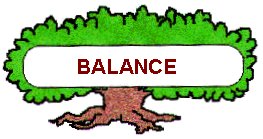

Home Page |
MICHIGAN FORESTS FOREVER TEACHERS GUIDE
| BALANCE SECTION |  |
"Balance" refers to forest management decisions that consider a large number of biological, economic, and sociological factors. Some of these factors, or elements of a factor, may not be as well understood as desired. However, the demand by the public for increasing amounts of wood, recreation, wildlife, clean water, and other outputs requires that we manage for these things as best as possible. WITH management, our forests will produce more outputs than without management. Management is also the answer to many environmental challenges (read the background essay by Dr. Patrick Moore), such as climate change and carbon sequestration..
Forests are NOT managed for the sake of the forest. They are managed for people. Forest don't need management. Forests were here long before people and they did just fine. People need forests. That's why forests are managed. And that's where the economic and sociological factors come into play with forestry. Sometimes factors contradict each other and controversy arises. Other times, the results of proposed practices or policy are not fully understood by science and objections are raised. Many times in the public arena, perception counts more than science.
 |
Activity Suggestions Study Quest - Multiple Ideas |
A Forestry Primer
Forest Management Systems
Multiple Use
Use of Wood
Fast Fun Forest Facts
Forest Management Guidelines for Michigan (By the Michigan Society of American Foresters)
In the table below, some of the forest management factors are listed. Some factors might fit in more that one category.
| BIOLOGICAL FACTORS | ECONOMIC FACTORS | SOCIOLOGICAL FACTORS |
| Forest Type Tree Species Mix Tree Species Characteristics Timber Age, Size, Quality Stand Density Soil Type & Condition Habitat Attributes Rare Species or Features Proximity to Water Landscape Characteristics Forest Pest Situation |
Timber Product Mix Access to Stand Size of Timber Sale Soil Conditions Local Topography Distance to Mills Type of Mills Season of Year Mill Prices Stumpage Prices Type of Harvest Equipment Type of Harvest System Road System Quality Trail Construction Water Crossings Forestry in Local Economy Average Income Levels Unemployment Rate |
Proximity to High Use Area Harvest System Visual Appearance Attitudes About Harvest Attitudes About Forests Ownership of Stand Landowner Awareness Level Management Objectives Competing Use Interests Available Assistance Local Human Demographics Laws & Regulations Logger Skill Level Rural vs. Urban Landowner Associations & Co-ops |
 |
This website was developed and created by Michigan State University Extension for the teachers of the State of Michigan. |
Page Name: Balance.htm